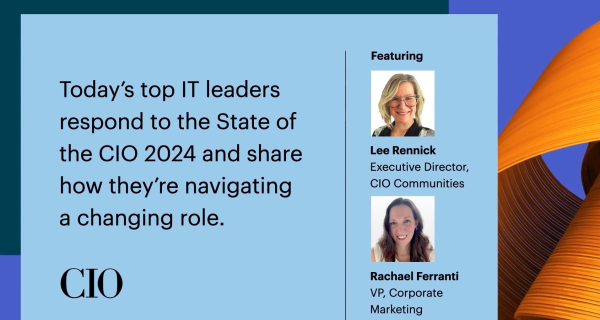If you think IT decision-makers (ITDMs) are too busy/important/serious to use social media, then we have a surprise for you.
Recent IDG research shows that ITDMs are every bit as active in social channels as any other business professional. In fact, IDG’s 2018 Customer Engagement Research study found that 93% of ITDMs use social media channels for business purposes and two-thirds share or post content to social networks.
Perhaps even more surprising is that executive IT managers are more active in some social channels than their teams or LOB counterparts. For example, 42% of executive IT managers post content to LinkedIn, compared to 35% of IT managers and 37% of business managers.

LinkedIn is the most popular social network with this group, which isn’t surprising given LinkedIn’s status as the business social network of choice. What is surprising is the rapid ascendance of more consumer-focused platforms such as YouTube and Facebook. In fact, two thirds of ITDMs told us they use YouTube in 2018, up from 46% the previous year. Use of Facebook doubled in the same time to 52%, and Twitter saw a similar bounce.
Why the sudden surge in social network use? IDG’s Social Media Director, Ginevra Adamoli, has a simple explanation. “They’re representing the company and they want to be seen,” she says. “They want to be thought leaders.”
With digital transformation now a board-level issue in many organizations, IT executives have an unprecedented opportunity to demonstrate leadership and business results that drive organizational change and built positive sentiment for their organizations and themselves. As social networks like LinkedIn have reached critical mass, they’ve become the fastest way for CIOs not only to promote their achievements but also to network with others for advice and career opportunities. The latter shouldn’t be under-estimated. ITDMs are “most actively engaged when they’re looking for jobs,” Adamoli says.
The growing popularity of social networks isn’t surprising in the context of broader business trends. CIO’s 2019 State of the CIO report found that CIOs are increasingly looking to develop their own leadership profiles, tune in to customer requirements and demonstrate mastery of digital technology.
Tim Grieveson, CIO/CISO, and Managing Director of CyberCiso Security Limited (an IT & Security Consulting firm), uses social media for just that. Tim says his social media strategy is to “raise awareness and establish myself and my company as a thought leader, to conduct research prior to meeting with a client, to build relationships, and to nurture those relationships after face-to-face meetings. As a busy CIO and CISO, social media allows me to connect, learn and extend my expertise globally.”
All of these goals are well served by active use of social channels. LinkedIn’s updates and publishing platform are a prime way for ITDMs to share their ideas and accomplishments without the delays of working through intermediaries. And as technology CEOs, industry analysts and leading publications grow their social network footprints, the platforms grow in value.
Fake news and questionable privacy practices by some social networks apparently haven’t dampened ITDMs’ enthusiasm. They’ve learned to filter the noise and put their faith in a few trusted sources. “We’ve seen that content that is most shared and engaged with comes from trusted publications,” says Adamoli.
For example, the weekly #IDGTechTalk Twitter chat often draws hundreds of comments about such topics as blockchain and digital transformation, with visitors sharing links to content that helps their peers study up on the topics in a hurry. “On these Twitter chats, ITDMs meet each other and become friends,” Adamoli says. “It’s become a community.”
Peter Salvitti, Chief Technologist at Boston College, engages on Twitter for a variety of reasons. He “primarily began using it simply as a way to keep up with developments in technology.” Over time, he says, “it has become one of the primary platforms of my PLN, using it to consume content and extend my reach online.”
The popularity of YouTube is growing value as a tool for demonstrations and quick explainers, as evidenced by the high ratio of ITDMs who consume video content relative to those who post it. Facebook’s two billion-plus members make it the go-to place for keeping up with friends and family and, at some level, “there isn’t much distinction between personal and business life,” Adamoli says. “There may be a perception that Facebook is shallow, but they do use it.”
The takeaway for IT marketers is that social media should be considered an effective means of getting a message in front of influential buyers. By aligning with brands that have already earned decision-makers’ trust, marketers can piggyback on the credibility others have established.
Key success factors include using strong visuals and keeping content short. “No one wants to read a 53-page white paper, especially on a mobile device,” Adamoli says. Visuals like animated GIFs and humorous allusions to pop-culture do particularly well. “Make it fun and flashy,” Adamoli advises.
Don’t make content overly technical. One of IDG’s most successful recent social memes was around the subject of women in technology. Topics related to culture and technology’s impact on society do particularly well. “Make it personal and appeal to emotions,” Adamoli notes. It turns out IT decision-makers are people, too.




